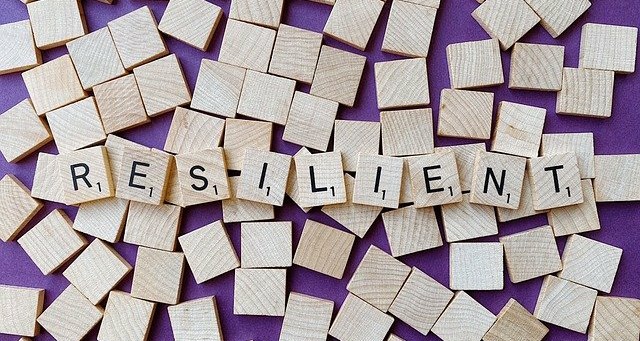Business resilience
Contents |
[edit] Introduction
In 2020 the double whammy of a coronavirus pandemic and an indeterminate prediction of the outcome of Brexit negotiations has led to a new consideration in boardrooms up and down the country. The word on directors’ lips is “resilience”.
Building resilience into an organisation requires focus in three distinct areas:
- Strategy at corporate level.
- Day-to-day operational policies.
- Workforce adaptability.
[edit] Strategy at corporate level
- Construction projects rely on supply chains. Whereas price has generally been the dominant factor, procurers should also consider the vulnerability of long supply chains and logistical reliability.
- Consider building cash reserves to tide over shortages or unexpected crises such as a pandemic rather than paying large bonuses or distributing over generous dividends.
- Carrying increased stock and spares so there is less reliance on “just in time” deliveries.
- Designing projects with a greater emphasis on using local products and labour.
[edit] Day-to-day operational policies
- This is about rapid response to changing circumstances in order to survive.
- Pubs turning into takeaways and the motor industry producing ventilators in response to the coronavirus pandemic were examples of agile management thinking on its feet.
- The incredible speed with which the Nightingale hospitals were established shows what an industry can achieve when it has a rapid response mindset.
- Carry out management exercises in scenario planning for different potential situations that could arise; such as power cuts, terrorist attacks, natural disasters, changes in legislation, industrial action, supply chain disruption, pandemics and so on.
[edit] Workforce adaptability
- Reliance on one key individual is risky and shadow working is desirable.
- The ability of a business to have a workforce that can continue to function by remote working has proved to be life saving for some companies during national lock downs.
- The construction industry has had to adapt its practices to social distancing to stop the spread of COVID-19. This entails detailed planning of overlapping trades and installation to avoid proximity clashes.
There is every chance that 2020 will be seen as disastrous, but the subsequent recovery will kick start a number of innovations and changes to working practices. Artificial Intelligence, the internet of things and smart buildings are likely to feature in technical advancement but the coronavirus pandemic has shown up a number of weaknesses that will need addressing and moreover it has caused people to re-evaluate their lifestyle. This will force cultural change to the working environment. Shorter working hours, improved productivity through technology and a greater respect for the environment could herald a new dawn. It is an opportunity to reset the clock.
[edit] Related articles on Designing Buildings Wiki
- Adaptability.
- BREEAM Adaptation to climate change.
- BREEAM Designing for durability and resilience.
- Building back better with BREEAM.
- Building Back Better: Resilience
- Building flood resilience.
- Coronavirus.
- Design flexibility.
- Designing resilient cities: a guide to good practice (EP 103).
- Engineering resilience to human threats.
- Future proofing construction.
- Managing and responding to disaster.
- Pressing pause to avoid errors.
- Property flood resilience.
- Resilience.
- Re-evaluating the design life of buildings.
- Two steps towards a more resilient world.
Featured articles and news
RTPI leader to become new CIOB Chief Executive Officer
Dr Victoria Hills MRTPI, FICE to take over after Caroline Gumble’s departure.
Social and affordable housing, a long term plan for delivery
The “Delivering a Decade of Renewal for Social and Affordable Housing” strategy sets out future path.
A change to adoptive architecture
Effects of global weather warming on architectural detailing, material choice and human interaction.
The proposed publicly owned and backed subsidiary of Homes England, to facilitate new homes.
How big is the problem and what can we do to mitigate the effects?
Overheating guidance and tools for building designers
A number of cool guides to help with the heat.
The UK's Modern Industrial Strategy: A 10 year plan
Previous consultation criticism, current key elements and general support with some persisting reservations.
Building Safety Regulator reforms
New roles, new staff and a new fast track service pave the way for a single construction regulator.
Architectural Technologist CPDs and Communications
CIAT CPD… and how you can do it!
Cooling centres and cool spaces
Managing extreme heat in cities by directing the public to places for heat stress relief and water sources.
Winter gardens: A brief history and warm variations
Extending the season with glass in different forms and terms.
Restoring Great Yarmouth's Winter Gardens
Transforming one of the least sustainable constructions imaginable.
Construction Skills Mission Board launch sector drive
Newly formed government and industry collaboration set strategy for recruiting an additional 100,000 construction workers a year.
New Architects Code comes into effect in September 2025
ARB Architects Code of Conduct and Practice available with ongoing consultation regarding guidance.
Welsh Skills Body (Medr) launches ambitious plan
The new skills body brings together funding and regulation of tertiary education and research for the devolved nation.
Paul Gandy FCIOB announced as next CIOB President
Former Tilbury Douglas CEO takes helm.
UK Infrastructure: A 10 Year Strategy. In brief with reactions
With the National Infrastructure and Service Transformation Authority (NISTA).























